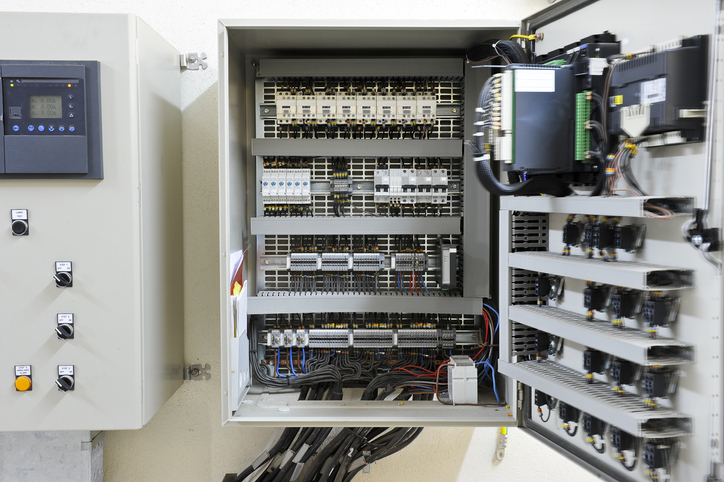Blog
Konstrukcja pasów transportowych. Przewodnik
- Details
W większości zastosowań przemysłowych związanych z produkcją lub logistyką niezbędne są różne rozwiązania z obszaru transportu wewnętrznego, które pozwolą na międzyoperacyjne przemieszczanie wyrobów czy surowców lub półproduktów. Wśród najczęściej stosowanych urządzeń transportu bliskiego (UTB) niezwykle rozpowszechnione są przenośniki wyposażone w taśmy transportujące. Przekonajmy się, jak jest zbudowany ich główny element odpowiadający za ruch ładunku i sprawdźmy, w jaki sposób funkcjonuje.
Eksploatacja szaf sterowniczych a przepisy prawne
- Details
Jednym z podstawowych elementów maszyn, urządzeń przemysłowych, maszyn roboczych i pojazdów oraz rozmaitych instalacji są szafy sterownicze. Przekonajmy się, do czego są wykorzystywane i sprawdźmy, jakie najważniejsze regulacje prawne dotyczące ich produkcji, jak też późniejszej eksploatacji.
Gdzie i jak wykorzystywane są szafy sterownicze?
- Details
Prawidłowe funkcjonowanie infrastruktury przemysłowej wiąże się z koniecznością stałego kontrolowania parametrów pracy poszczególnych jej komponentów i dobierania ustawień w zależności od potrzeb oraz ewentualnej zmiany warunków, w jakich są realizowane konkretne procesy. Choć za wiele z nich odpowiadają układy automatyki przemysłowej, to nie obejdzie się zwykle bez nadzoru ze strony obsługi, która w razie takiej konieczności musi mieć możliwość ingerowania w działanie sprzętu. Nie byłoby to możliwe bez szaf sterowniczych. Przekonajmy się dlaczego.
Building industrial machines for individual applications
- Details
Modern manufacturing methods are based on the use of many automation and robotics solutions, allowing the individual operations that make up the process of creating a specific product to be carried out quickly and precisely. In most cases, the best results can be obtained by matching the operation of the equipment to the specific technology being used and the products being made. This will only be achieved if the machines and their tooling are designed and manufactured with the needs of the company in mind. It is therefore worthwhile to commission a contractor who is experienced in custom preparation for the construction of industrial machinery. Let’s find out why this is important and see how it goes.
What is Industry 4.0?
- Details
The challenges faced by manufacturing companies require far-reaching optimisation of fleet utilisation and a high degree of flexibility in operations, maximising the benefits achieved while reducing the expenditure incurred. To implement these objectives, it is increasingly not enough to use classic automation solutions. The design and construction of production machinery today must make wider use of developments in information technology, as well as introducing new robotics solutions. One of the keys to success will be that the infrastructure in place is well prepared for the practical implementation of Industry 4.0. Let’s find out what this concept is all about and see how it translates into concrete action.
How does the design and engineering process work?
- Details
Industrial production requires the efficient implementation of various technological processes, the nature and course of which depend on the specifics of the industry in question. The way to achieve a high production rate and the right quality for your needs is to use the right machinery. Although many manufacturers offer both off-the-shelf production lines and their individual components, the best results can be achieved if you outsource the building of production machines to a company that tailors them strictly to your requirements. Let’s find out what elements need to be included in this process.

 PL
PL  EN
EN 




